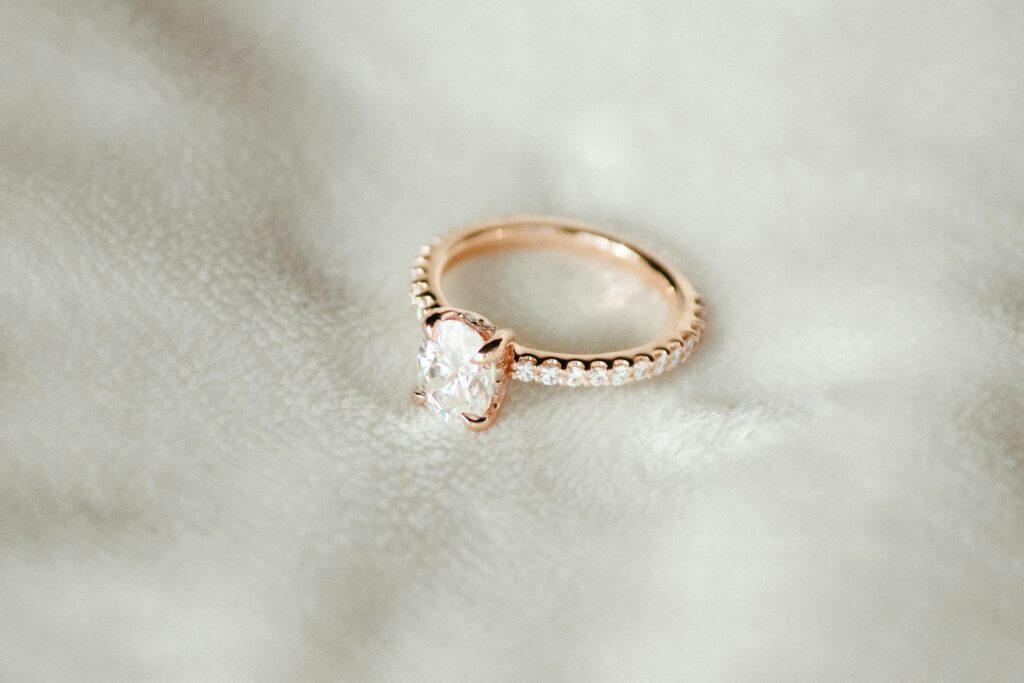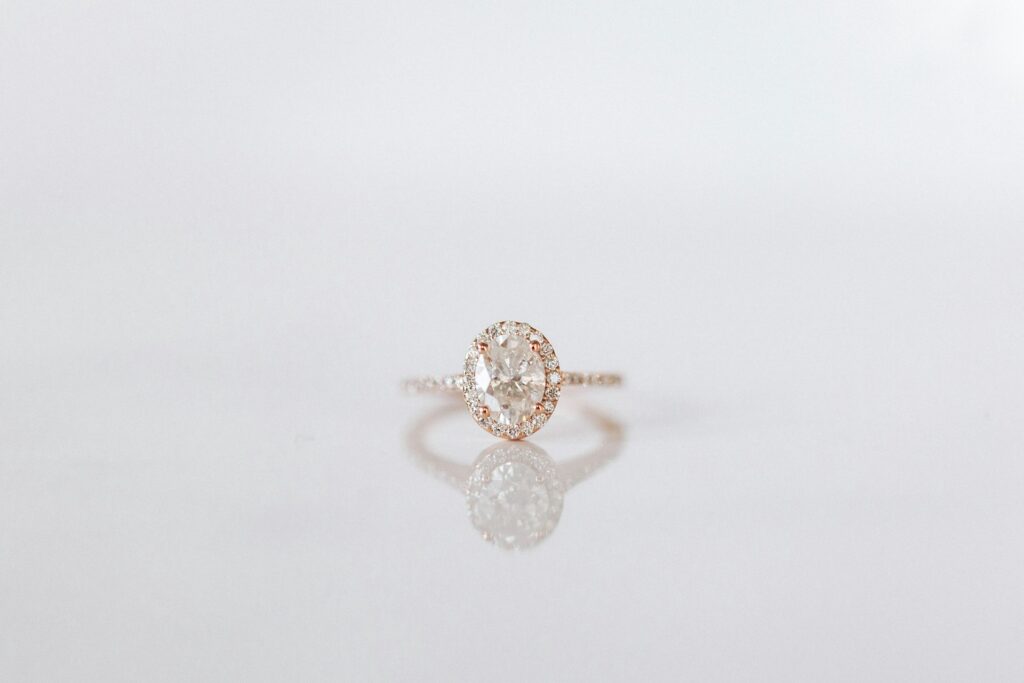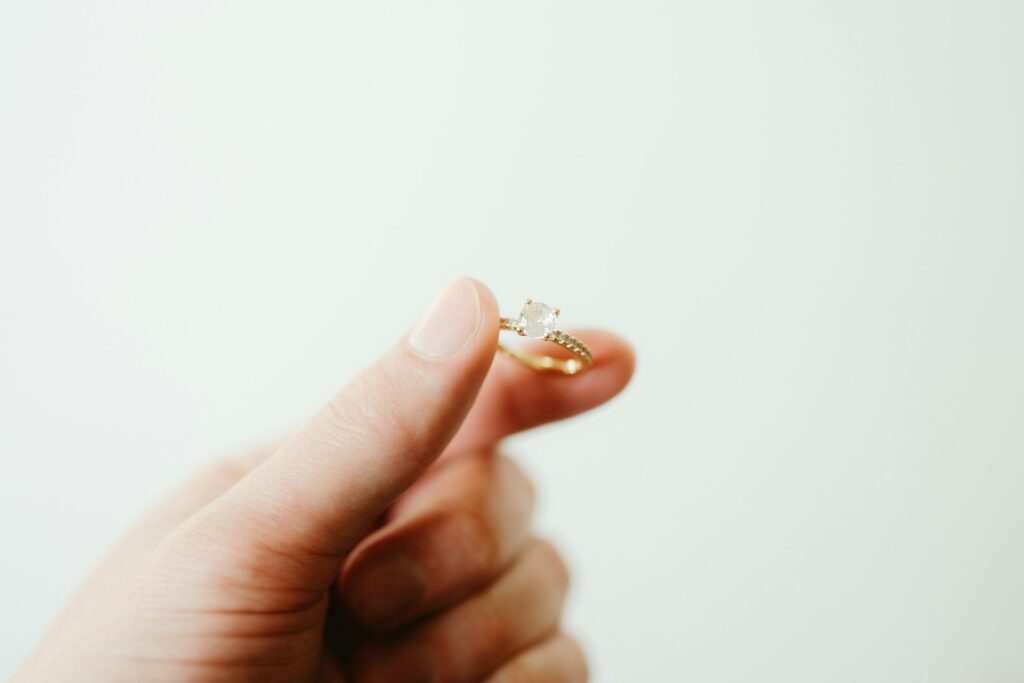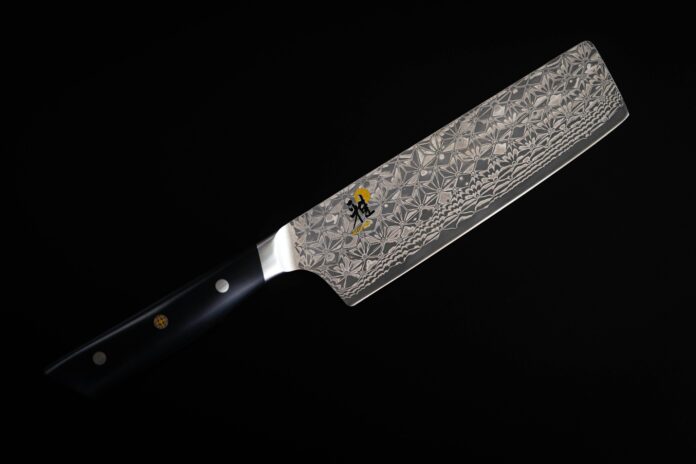Your diamond engagement ring is likely one of your most precious possessions, both emotionally and financially. We wear our engagement rings on a day-to-day basis and it doesn’t take long for debris and dust to gather in those hard to reach places. From applying hand cream to washing up the dishes, we do things every day that can dull the sparkle of our diamonds.
Regular cleaning not only maintains the brilliance of your stone but also helps preserve the integrity of the setting and ensures your ring continues to look as stunning as the day you first received it.
With proper care and attention, you can keep your diamond ring looking spectacular between professional cleanings. With this in mind, here are 7 comprehensive tips for cleaning a diamond ring at home, along with important advice on what to avoid and when to seek professional help.
Focus on the Setting
It is important to focus on the back of the ring setting, rather than only cleaning the surface of the face of the diamond. The setting of the ring is the part which is closest to the skin, and therefore will inevitably be the part of the ring which collects the dirt and any ephemera – additionally, if you allow dirt to build up here, it can also cause skin irritations on your finger.
Many people make the mistake of only cleaning the visible parts of their ring, but the underside of the setting is where most buildup occurs. This area traps soap residue, dead skin cells, and everyday grime that can actually block light from entering the bottom of your diamond, significantly reducing its sparkle.
Pay particular attention to prong settings, as dirt can accumulate around each prong, and channel settings, where debris can settle between the metal walls holding smaller diamonds.
Read: How to look after your jewellery to ensure its longevity

Use a Soft Bristle Brush
The best advice we can give when it comes to choosing the right equipment for diamond cleaning is simply a soft bristled toothbrush, akin to the type which is recommended for younger children – nothing that will break the bank. The bristles will allow you to clean effectively around all facets and types of settings, while not being abrasive or harmful in any way.
When selecting your brush, opt for one with the softest bristles available. Baby toothbrushes are ideal as they’re designed to be gentle. Avoid medium or hard bristled brushes at all costs, as these can scratch softer metals like gold and may even loosen prongs over time.
Keep a dedicated brush specifically for your jewellery cleaning – don’t use the same brush for other household tasks. Some jewellers recommend using a soft makeup brush for particularly delicate vintage settings or antique pieces with intricate metalwork.


Never, Ever Use Bleach
At all costs, avoid cleaning any diamond jewellery with a bleach based solution or any other corrosive solutions. They are used for other surfaces and are a big no-no for jewellery. These solutions can damage the diamond and the metal setting, and this damage would be irreversible.
Beyond bleach, there are several other household cleaners you should avoid: chlorine (found in swimming pools and some cleaning products), acetone, harsh detergents, and abrasive cleaners. These chemicals can discolour metal settings, particularly white gold which often has a rhodium plating that can be stripped away.
Even seemingly harmless products like toothpaste, which some outdated guides recommend, can be too abrasive for precious metals. When you go here to check out reputable sellers, they’ll often provide specific care instructions for your particular ring’s metal and stone combination.
Always follow those guidelines to help maintain the piece’s condition and avoid unnecessary wear.

Try a Grain Based Alcohol
A traditional method for cleaning diamonds is to use a strong, clear grain based alcohol such as vodka or gin. The science behind this theory is that the high level of ethanol is a natural solvent will chemically remove any stray dirt that is on the surface of the diamond or is trapped inside the setting of the ring.
To use this method effectively, pour a small amount of vodka or gin into a shallow dish and let your ring soak for 20-30 minutes. The alcohol will help dissolve oils and loosen debris. After soaking, use your soft brush to gently scrub around the diamond and setting, then rinse thoroughly with warm water.
This method is particularly effective for removing stubborn buildup from hand lotions and perfumes. However, avoid this technique if your ring contains any porous gemstones alongside the diamond, such as pearls or opals, as alcohol can damage these stones.
Read: The IDEAL guide to travelling with jewellery
Or Use Baking Soda
Alternatively, baking soda is another traditional solution to many cleaning quandaries, and when combined with water to form a thick paste, it becomes a fantastic product for cleaning diamonds and the metal settings of the rings. As with all cleaning, it is best to rinse thoroughly with warm water to remove any residue.
To create an effective cleaning paste, mix three parts baking soda to one part water. The consistency should be similar to toothpaste – thick enough to stick to your ring but thin enough to work into crevices. Apply the paste with your soft brush, working it gently around all surfaces of the ring. The mild abrasive action of baking soda helps remove tarnish from silver settings and can brighten up dull gold.
For extra cleaning power, you can add a drop of washing up liquid to your baking soda paste. Always ensure you rinse extremely thoroughly, as any leftover residue can leave a white film on your jewellery.

Washing Up Liquid Works Wonders
However, our recommendation for the best product to clean diamond rings is to use soap diluted with water – simple. Any kind of regular household soap, such as washing up liquid or hand soap is perfect for the job. As with any type of cleaning, leaving the jewellery to soak is preferable, as this loosens any solidified particles in hard to reach areas.
The ideal ratio is approximately one part washing up liquid to four parts warm (not hot) water. Hot water can cause some metals to expand and potentially loosen stones, so always use warm or lukewarm water. Let your ring soak for 20-40 minutes, depending on how dirty it is.
For rings worn daily, a weekly 20-minute soak is usually sufficient. After soaking, use your soft brush to gently clean around the diamond, paying special attention to the underside of the stone and the areas where the prongs meet the diamond. This method is safe for all precious metals and won’t harm any additional gemstones your ring might feature.
If All Else Fails, Use a Specialist
Whilst you can successfully clean your diamond ring at home using the advice we have given you, the best and most meticulous method of cleaning a diamond ring is to take your jewellery to your jeweller to have the diamond’s settings checked, as well as having it professionally cleaned using an ultrasonic system.
An ultrasonic system is a specialised tank which is filled with liquid – which the jewellery is submersed in – and which then produces high frequency sound waves, which can disturb and remove the tiniest dirt particles from normally unreachable parts of the jewellery.
Professional cleaning should be done at least once or twice a year, and this visit serves a dual purpose. Not only will your ring receive a thorough cleaning that’s impossible to achieve at home, but your jeweller will also inspect the setting for any signs of wear.
Loose prongs, worn mountings, or thinning bands can be caught early and repaired before you risk losing your precious stone. Many jewellers offer free cleaning services for rings purchased from them, and some even include lifetime cleaning in their warranty packages.
Additional Care Tips
Remember to remove your ring before applying hand cream, perfume, or hairspray, as these products can leave a film on your diamond. Similarly, take off your ring before swimming (chlorine can damage metals), exercising (to prevent knocks and scratches), or doing household chores involving chemicals. Store your diamond ring separately from other jewellery to prevent scratching, ideally in a fabric-lined jewellery box or soft pouch.
By following these guidelines and maintaining a regular cleaning routine, your diamond ring will continue to sparkle brilliantly for years to come, looking just as beautiful as it did when you first slipped it on your finger.





